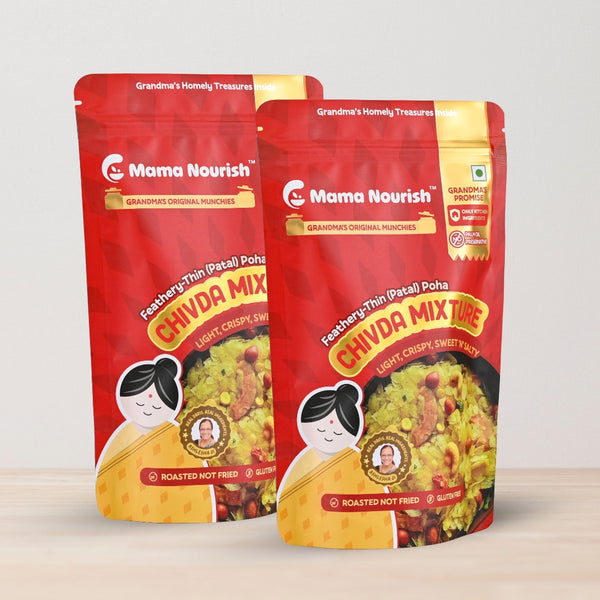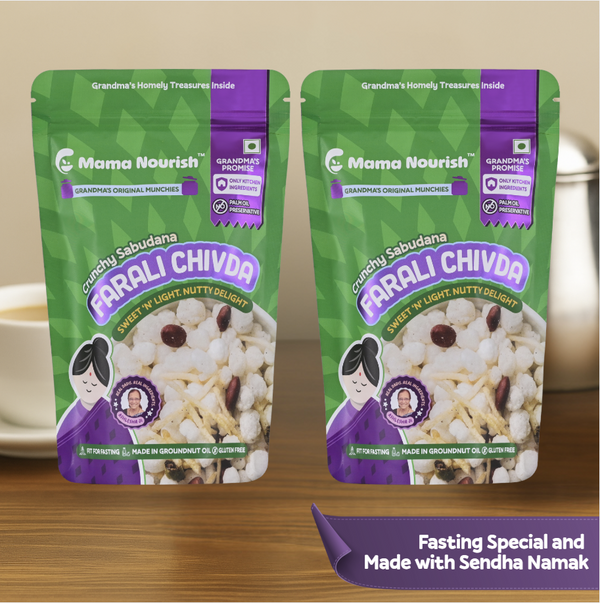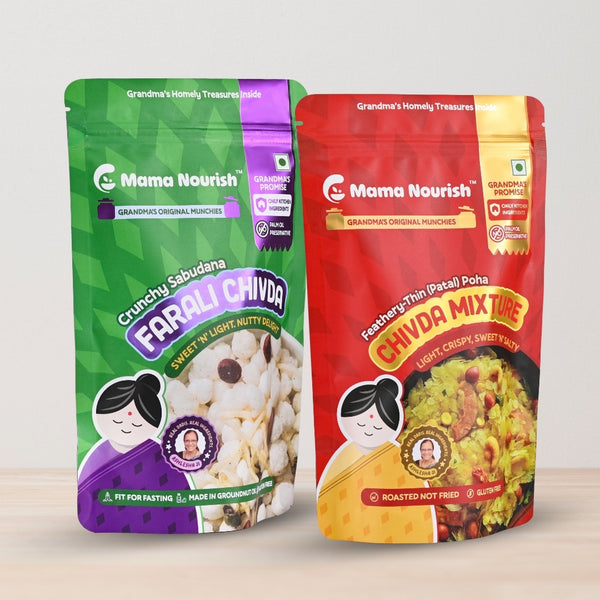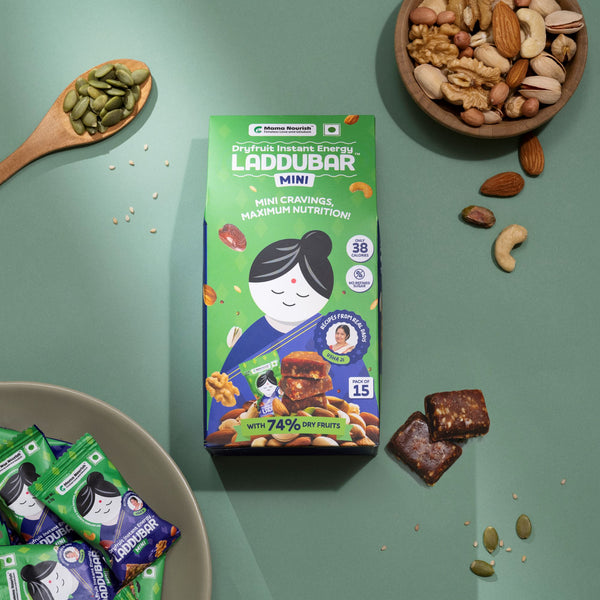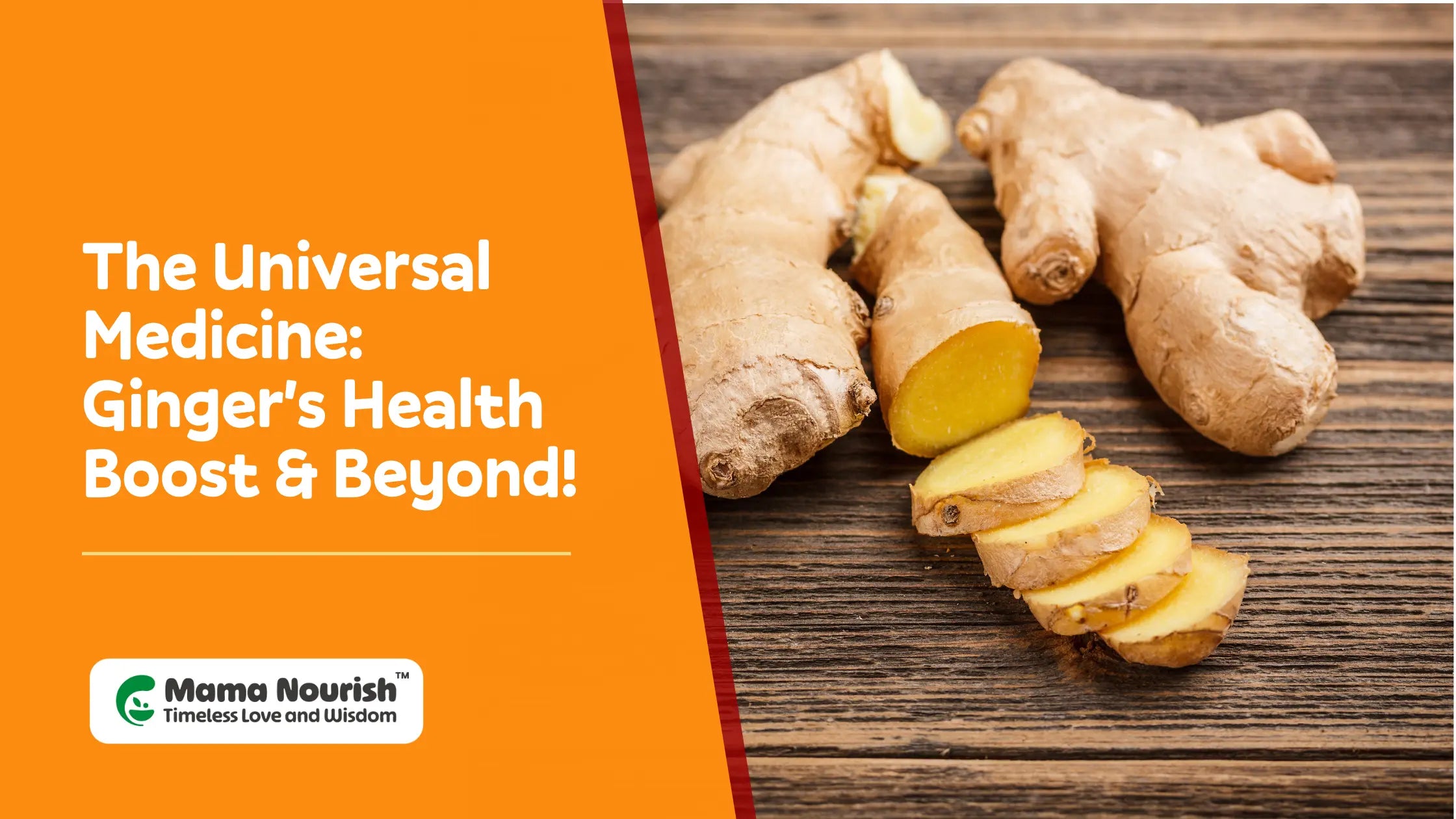
The Universal Medicine: Ginger's Health Boost & Beyond!
How many times have you turned to ginger tea to ward off a cold?
The very smell and flavour of ginger might evoke fond memories of home remedies prepared lovingly by your grandmother.
In fact, ginger is hailed as "Mahaushadha" (great medicine) and "Vishvabhesaja" (universal herb) in Ayurveda, reflecting its widespread usage in treating various disorders.
Today, modern science is delving into this ancient wisdom, validating its health benefits.
So, how about exploring the medicinal properties of this magical ingredient omnipresent in Indian cuisine while savouring some delightful ginger recipes?
Top 10 Health Benefits of Ginger

1. Nutrients
With only 9 calories per 11g serving, ginger is low-calorie.
Furthermore, it contains no fat.
Despite its low carbohydrate content, ginger provides gut-friendly fibre. It also has essential minerals like magnesium and potassium in trace amounts.
Ginger contains a compound known as gingerol, which is known for various beneficial properties, including anti-cancer, anti-inflammatory, antifungal, antioxidant, neuroprotective, and gastroprotective effects.
2. Nausea Relief
A 2016 study highlights ginger's efficacy in reducing nausea and vomiting, especially in instances of motion sickness, pregnancy-related nausea, and chemotherapy-induced nausea.
Ginger has been used for aiding digestion and treating nausea since ancient times.
3. Anti-inflammatory and Pain Relief
Ginger has long been valued in traditional medicine for its anti-inflammatory properties and pain-relieving effects, a notion supported by recent scientific research.

Indian Ayurvedic Kadha/Karha or health tonic for fighting seasonal infections, is made using ginger, tulsi, black pepper, clove and honey
4. Anti-Cancer
Due to the presence of compounds such as gingerols, shogaol, and paradols, the ginger may help in preventing various types of cancer.
5. A Natural Galactagogue
Traditionally recognized as a natural galactagogue, In a 2016 clinical trial, ginger has shown its ability to enhance breast milk production during the immediate postpartum period with no significant side effects.
To learn more about natural galactagogues read- 5 Dos and Don'ts of Postpartum Recovery
6. Aids in Weight Loss
The consumption of ginger may lower the body weight. It ensures faster digestion and Ginger can be consumed in various forms, such as ginger tea, juice, ginger lemon tea, etc., for weight loss.

7. Anti-diabetic
Ginger exhibits anti-diabetic properties, as supported by studies. Oral administration of ginger powder supplements has been shown to improve fasting blood sugar and compounds like haemoglobin A1c in type 2 diabetic patients.
These findings indicate the potential of ginger in alleviating the risk of certain chronic complications associated with diabetes.
8. Reduce Cholesterol
The ginger contains zero cholesterol and it's widely used as a natural cholesterol-reducing agent.

Ginger garlic paste- Extensively used in Indian cooking
9. Treats Iron Deficiency
The research from Ayushnext, the Ayush Ministry, found ginger effective in dealing with anaemia and other iron deficiency-related issues. Ginger was shown to enhance iron absorption, making it a valuable supplement for treating anaemia.
10. Gluten-Free
Ginger is gluten-free. Gluten is a protein found in grains like wheat, barley, and rye. It causes adverse reactions in individuals with gluten-related disorders like celiac disease or gluten sensitivity.
In addition to the above benefits, ginger is known to be effective against bloating, constipation, menstrual pain and cough. Ginger is also an natural immunity booster.
So far, we discussed the health benefits of ginger; now, let's go through some taste ways to add ginger to your diet.
7 Tasty Ways to Add Ginger to Your Diet!
1. Adrak Chai/ Ginger Milk Tea

Why not add a healthy twist to your regular tea with the refreshing flavour of ginger?
The ginger tea is like your regular milk tea, but with a strong ginger kick, a dash of cardamom, and a dash of cinnamon with some extra spices!
2. Ginger Methi Laddu

Ginger Methi Ladoo is crafted from fenugreek (Methi), Gond, almonds, cashews, walnuts, pistachios, poppy seeds, ginger powder, musk-melon seeds, and dates. Alongside Methi Ladoo, consider trying Gondh Ginger Laddu as well.
And for those seeking a convenient snack or a wholesome desk companion, indulge in our laddubars, the perfect blend of flavour and nourishment!
3. Puli Inji

Puli Inji is a traditional condiment from Kerala, made with ginger, tamarind, jaggery, and spices. "Puli" in Malayalam stands for tamarind, while "inji" refers to ginger. It's a must-have for Sadya (feast) or vegetarian meals during festive occasions.
4. Sambharam/ Ginger Buttermilk

Sambharam/ginger buttermilk is a refreshing South Indian drink made by blending buttermilk with ginger, curry leaves, and spices for a tangy and cooling effect.
It serves as a soothing accompaniment to meals or a revitalizing drink on hot days. Additionally, it's known to aid digestion, thanks to the digestive properties of ginger!
5. Gond Katlu

Gond Katlu, a traditional Indian delicacy, is made using ingredients like edible gum resin (gond), nuts, ginger, and spices, offering energy and immunity boost. It is traditionally consumed for postpartum recovery and digestive support.
To learn more about gondh read- Grandma's Secret Superfood: Gondh (Gum Acacia) Unveiled by Modern Science!
6. Kadha

Kadha is an age-old remedy for cough, used in almost all Indian households. This traditional Ayurvedic drink, consumed similarly to tea, is typically made using Tulsi leaves, ginger powder, black pepper, and other ingredients such as cinnamon, cloves, and honey. Kadha is a go-to remedy for cough, cold, and congestion.
You can also combine slices of lemon and ginger to make ginger lemon tea.
7. Litti Chokha

Did you know that Litti Chokha is believed to have been part of the wartime meals of Tantia Tope and Rani Lakshmi Bai, during the first war of Indian independence in 1857?
The lesser ingredients and portability made it an ideal wartime meal!
Litti Chokha is a traditional dish with its origin dating back to the Magadha empire. These dish from present-day Bihar, Jharkhand and Uttar Pradesh, consists of Litti, which are whole wheat flour dough balls stuffed with a spiced mixture of roasted black chickpea flour (sattu), and Chokha, a side dish made from mashed potatoes, roasted eggplant, or tomatoes, seasoned with mustard oil, green chillies, ginger, onions, and spices.
The filling for Litti consists of a flavorful mixture of roasted chickpea flour (sattu), finely chopped onions, green chillies, ginger-garlic paste, mustard oil, lemon juice, and assorted spices.
Ginger: An Ancient Elixir with Timeless Flavor!

In this blog post, we've explored the health benefits of ginger, as described in our age-old classic Ayurvedic texts and supported by modern research. With numerous health benefits of ginger awaiting discovery, why not savour some traditional, delectable dishes bursting with ginger flavour?
Don't forget to try the dishes mentioned in the article, and share your favourite ginger recipe in the comment box below.
Additionally, if you're interested in healthy eats crafted with Indian traditional wisdom, be sure to check out our laddubar.
Interesting Ginger Facts from History
- In Hindi, green and dry ginger are known as "adhrak" and "sunthi," respectively.
- According to the seventh-century Chinese traveller Xuan Zang, fresh ginger with salt was served to Buddhist monks at the ancient Nalanda monastery.
- During the Mughal period, the poor often consumed boiled rice with ginger.
- Visitors to South India during ancient and medieval times often documented the abundance of pepper and ginger, particularly in Kerala.
- Portuguese facilitated exports of ginger from South India around the 16th century, with large quantities being shipped, not less than 28 tonnes!
- Ginger is also utilized to add zest to sweet items, such as the samyava of Charaka, a sweet confection flavoured with cardamom, pepper, and ginger.
- François Bernier, a French physician who was employed by the Mughals in the 17th century, noted that preserves of ginger in sugar solution were commonly eaten for their medicinal connotation.
Ginger: Local Names

Share

